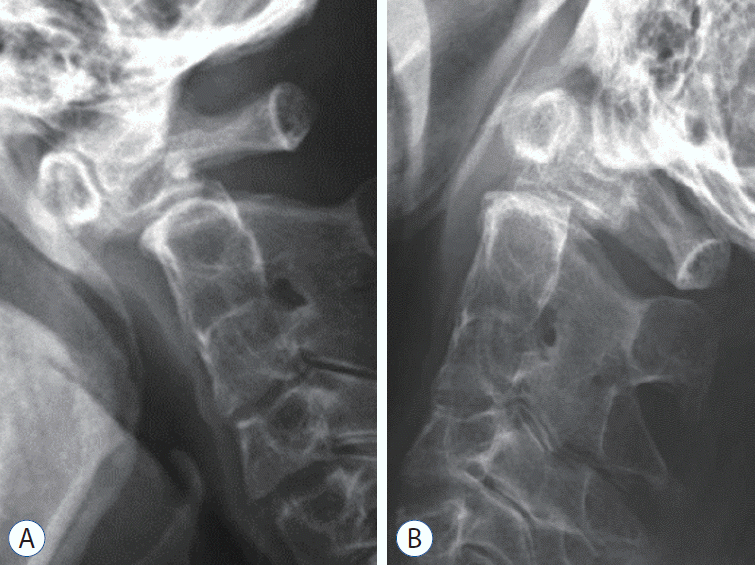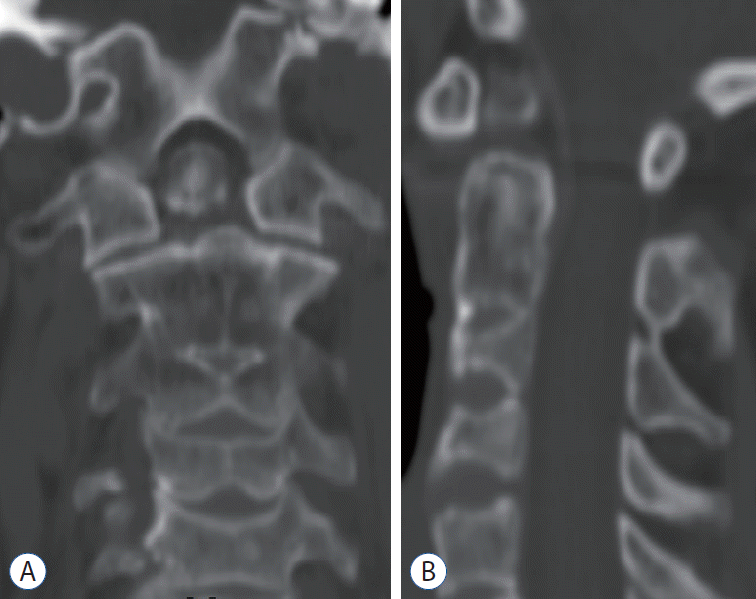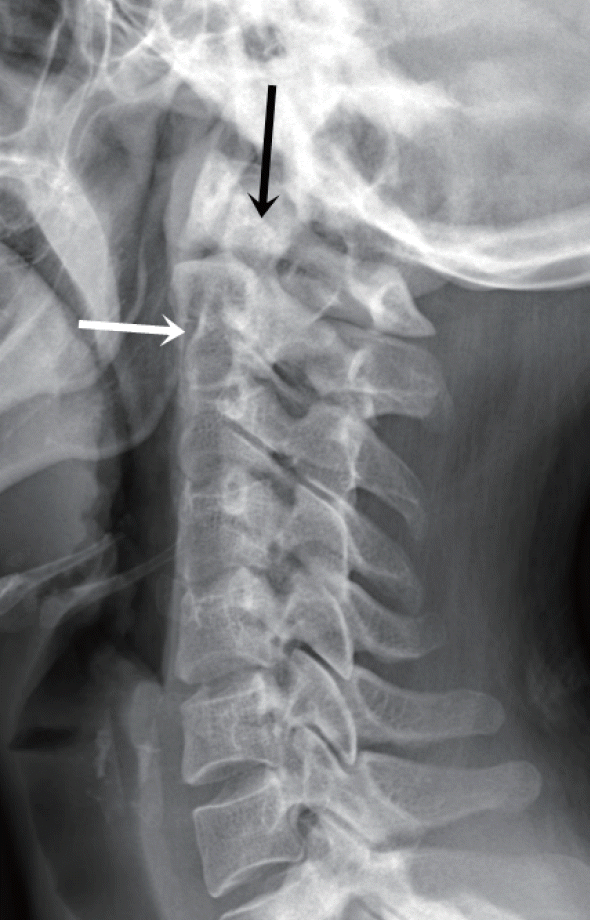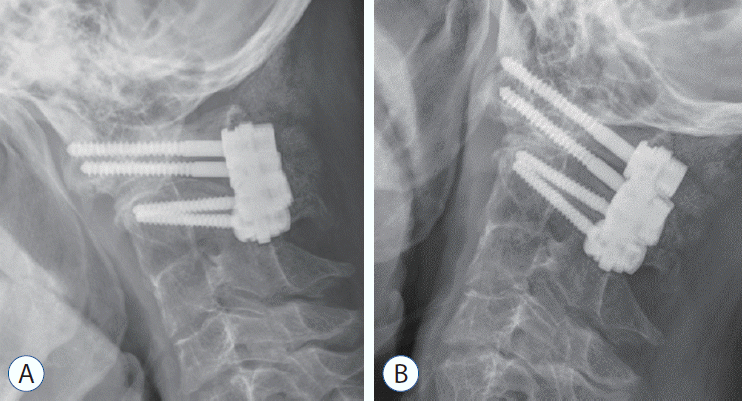1. Cave P. Butterfly vertebra. Br J Radiol. 31:503–506. 1958.

2. Colquhoun J. Butterfly vertebra or sagittal cleft vertebra. Am J Orthop Surg. 10:44–50. 1968.
3. Deepak AN, Salunke P, Kamble RP. Case of atlantoaxial dislocation with assimilated C1, absent posterior C2, butterfly C3, and fused subaxial cervical spine: management dilemma with multiple segmentation and formation defects. J Pediatr Neurosci. 12:72–74. 2017.

4. Gray SW, Romaine CB, Skandalakis JE. Congenital fusion of the cervical vertebrae. Surg Gynecol Obstet. 118:373–385. 1964.
5. Jain N, Verma R, Garga UC, Baruah BP, Jain SK, Bhaskar SN. CT and MR imaging of odontoid abnormalities: a pictorial review. Indian J Radiol Imaging. 26:108–119. 2016.

6. Katsuura Y, Kim HJ. Butterfly vertebrae: a systematic review of the literature and analysis. Global Spine J. 9:666–679. 2019.

7. McRae DL, Barnum AS. Occipitalization of the atlas. Am J Roentgenol Radium Ther Nucl Med. 70:23–46. 1953.
8. Müller F, O’Rahilly R, Benson DR. The early origin of vertebral anomalies, as illustrated by a ‘butterfly vertebra’. J Anat. 149:157–169. 1986.
9. Pang D, Thompson DN. Embryology and bony malformations of the craniovertebral junction. Childs Nerv Syst. 27:523–564. 2011.

10. Patcas R, Tausch D, Pandis N, Manestar M, Ullrich O, Karlo CA, et al. Illusions of fusions: assessing cervical vertebral fusion on lateral cephalograms, multidetector computed tomographs, and cone-beam computed tomographs. Am J Orthod Dentofacial Orthop. 143:213–220. 2013.

11. Patinharayil G, Han CW, Marthya A, Meethall KC, Surendran S, Rudrappa GH. Butterfly vertebra: an uncommon congenital spinal anomaly. Spine (Phila Pa 1976). 33:E926–E928. 2008.
12. Patra DP, Salunke P, Pramanick G. Butterfly C2 vertebra: an unusual finding in a case of os odontoideum. Pediatr Neurosurg. 49:320–323. 2013.

13. Salunke P, Behari S, Kirankumar MV, Sharma MS, Jaiswal AK, Jain VK. Pediatric congenital atlantoaxial dislocation: differences between the irreducible and reducible varieties. J Neurosurg. 104(2 Suppl):115–122. 2006.

14. Salunke P, Sharma M, Sodhi HB, Mukherjee KK, Khandelwal NK. Congenital atlantoaxial dislocation: a dynamic process and role of facets in irreducibility. J Neurosurg Spine. 15:678–685. 2011.

15. Shah A, Kaswa A, Jain S, Goel A. Atlantoaxial instability associated with pan cervical vertebral fusion: report on management of 4 cases. Neurol India. 66:147–150. 2018.

16. Smoker WR. Congenital anomalies of the cervical spine. Neuroimaging Clin N Am. 5:427–449. 1995.
17. Yang SY, Boniello AJ, Poorman CE, Chang AL, Wang S, Passias PG. A review of the diagnosis and treatment of atlantoaxial dislocations. Global Spine J. 4:197–210. 2014.

18. Yin HF, Yang KQ, Lou SQ. Clinical significance of congenital fusion of cervical vertebrae: a report of 87 cases. Zhonghua Wai Ke Za Zhi. 27:75–124. 75-77, 124. 1989.








 PDF
PDF Citation
Citation Print
Print




 XML Download
XML Download